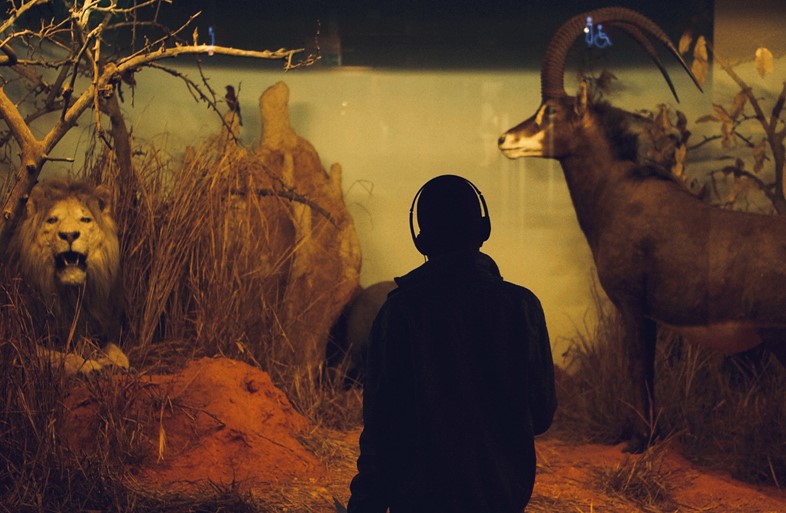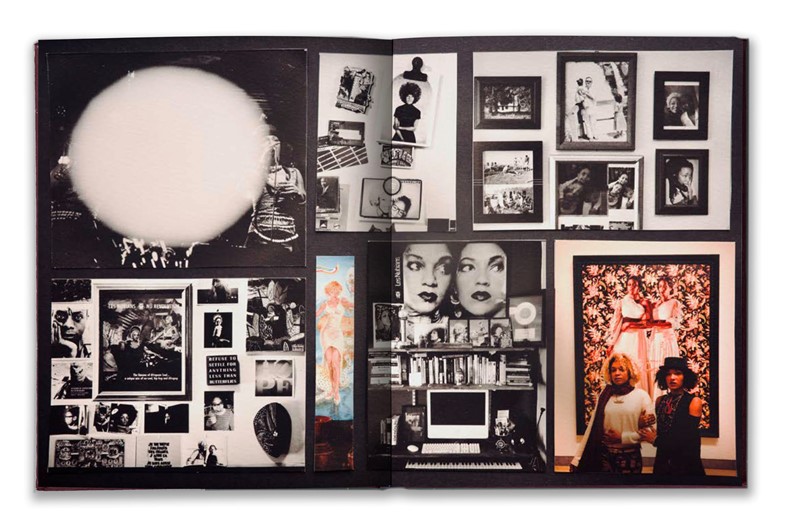Johny Pitts, Afropean: A Journal17 Images
In the opening pages of Afropean: Notes From Black Europe (2020), writer and photographer Johny Pitts introduces the reader to the term that underscores his writing on the lives of the Black community in Europe. According to Pitts, the word “Afropean” creates a space where “Blackness was taking part in shaping European identity” rather than viewing them as two hyphenated entities. This sensibility is also reflected in the online magazine afropean.com that Pitts had launched a decade earlier in 2010, which was similarly dedicated to spotlighting the cultural legacy of Black Europeans. Now in its third iteration as a three-hundred-page photobook published by Mörel Books that pairs Pitts’s non-fiction writing alongside photography, scans of handwritten itineraries, diary entries and various other ephemera from his five-month journey across Europe, Afropean: A Journal (also accompanied by a six-part podcast) expands on what the word encompasses in the wake of rising populism and far-right politics across the continent.
“I remember how growing up in the 90s was marked with a constant sense of optimism – especially with apartheid ending in South Africa and the Berlin Wall falling, but 9/11 and the anti-immigrant rhetoric that ensued destroyed all of that,” Pitts recounts over Zoom. “Even in the present moment, my work is haunted by what I imagined the future would be as a young person. I wanted to work through this melancholy to find spaces of potential solidarity and optimism.” This notion of being haunted by the loss of an optimistic future has been extensively written about by Mark Fisher, specifically in his book Ghosts Of My Life: Writings on Depression, Hauntology and Lost Futures, who Pitts notes was a crucial reference for Afropean Journal. Guided by Fisher’s writing, the photobook attempts to capture the potential of these failed futures through a profoundly layered exploration of the lives and culture of the Black community in Europe.
“With this book, I’m reworking that despair through images while simultaneously trying to bring back a sense of hope and solidarity,” Pitts explains. He aims to achieve this by juxtaposing handmade collages and pairing seemingly unrelated photographs to reveal subtle moments of connection. “On the surface, you might think that someone of Surinamese heritage living in Amsterdam or a Somalian in London have little in common, but I think we’re all affected by European imperialism in some capacity and can form some solidarity, especially against the rise of right-wing politics at the moment, “ he shares.
Veering away from what is typically expected of imagery of Black and Brown communities that are tied up in the Western imagination, the photographs in Afropean: A Journal does not participate in an exotification project. Instead, we are offered an alternative view into what exists in the periphery of Europe, such as photographs of the Cape Verdean community on the outskirts of Lisbon or the Cassiopeia club in Berlin. As you flip through the book, you come across pictures that are out of focus, shot in tungsten-lit metro stations, or what Pitts himself, as a young self-taught photographer, would have deemed an “imperfect” photograph spread over two pages.
Art should comfort the disturbed and disturb the comforted – Johny Pitts
“While I was sifting through my photography over the last decade, I realised that the clean portrait I thought was my favourite image now seems basic to me”, he shares. “For this book, I wanted each selection to capture the essence of my journey even if the photograph is technically terrible. I realised that those shaky photographs could deal with emotion, feeling and atmosphere better than when I was trying to capture a very specific, decisive moment.” Capturing the atmosphere of a space was especially important to Pitts as several of the spaces he wanted to document through his travels had disappeared due to gentrification. “There were instances when I heard about places like a club that the Black community would frequent in the Netherlands, but it had closed down. So, in a way, I was trying to do the impossible, which is document something that no longer exists,” he explained.

Alongside his publisher, Aron Mörel, Pitts was heavily involved in the design of Afropean, which he describes as having a scrapbook-like quality. “The book is designed to be a haptic, soulful experience. I was very particular about the paper stock and having uncoated pages so that the black colours in the photographs would sink into the pages, and it would feel rough around the edges,” he explains. “We’ve also included a lost chapter from my previous book, which detailed the time I met Emory Douglas – an artist for the Black Panther Party, in Lisbon. It broke my heart that it was taken out, so I put it back in this new book as the raw, photocopied version, which included the notes and critiques my editors had given me.” To Pitts, the book encompasses everything from a journal that captured the textures of his travels to a metaphorical night train that resembles the night trains he would take across Europe, but most importantly, he notes a sense of healing in the work. “Art should comfort the disturbed and disturb the comforted. I want the Black community to be comforted by this work. It is a lot to ask from a photo book, but it’s the intent with which I made this work.”
Visit the gallery above for a closer look.
Afropean: A Journal by Johny Pitts (launching at Paris Photo) is published by Mörel Books and is available for pre-order now. The Paris launch party takes place on November 8 (7-9pm) in collaboration with the launch of legendary British Hip-Hop photographer Eddie Otchere’s Spirit Behind The Lens at Little Africa, 6bis Rue des Gardes, 75018 Paris, France. RSVP [email protected]. The book signing is on November 9 (3pm) at Morel Books L04 Paris Photo Grand Palais and the artist talk is November 10 (2pm) at Galerie Courbe, Grand Palais.
The Afropean podcast is available here.

This post was originally published on here







